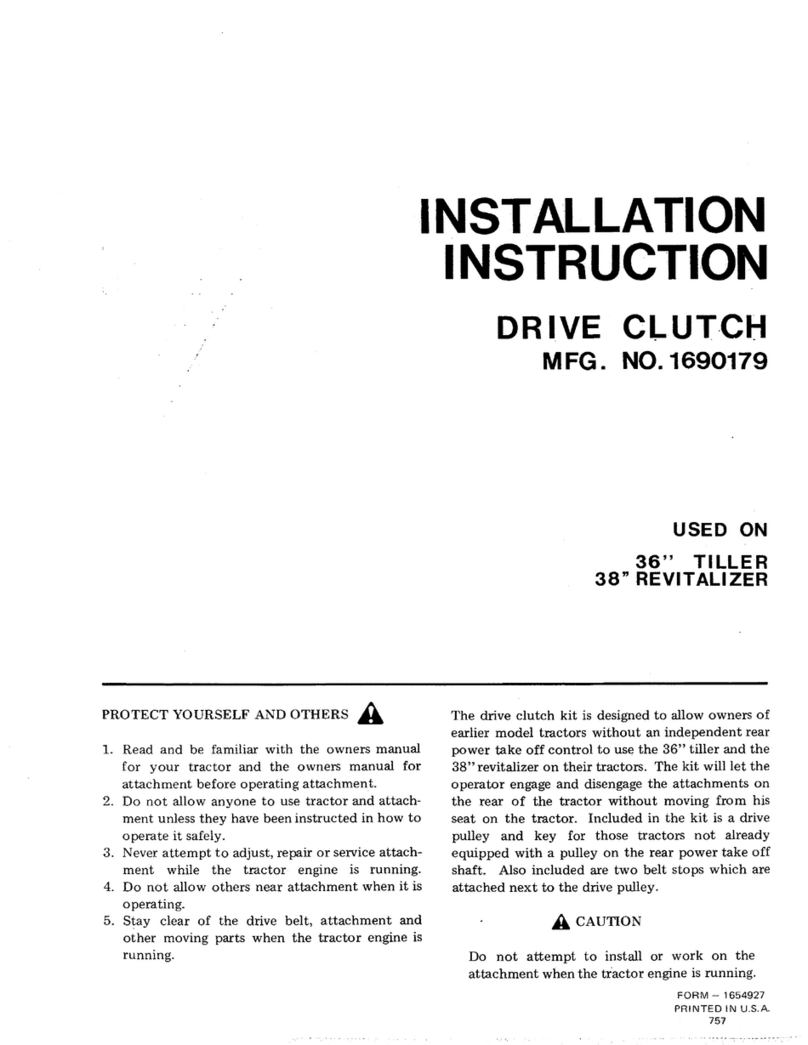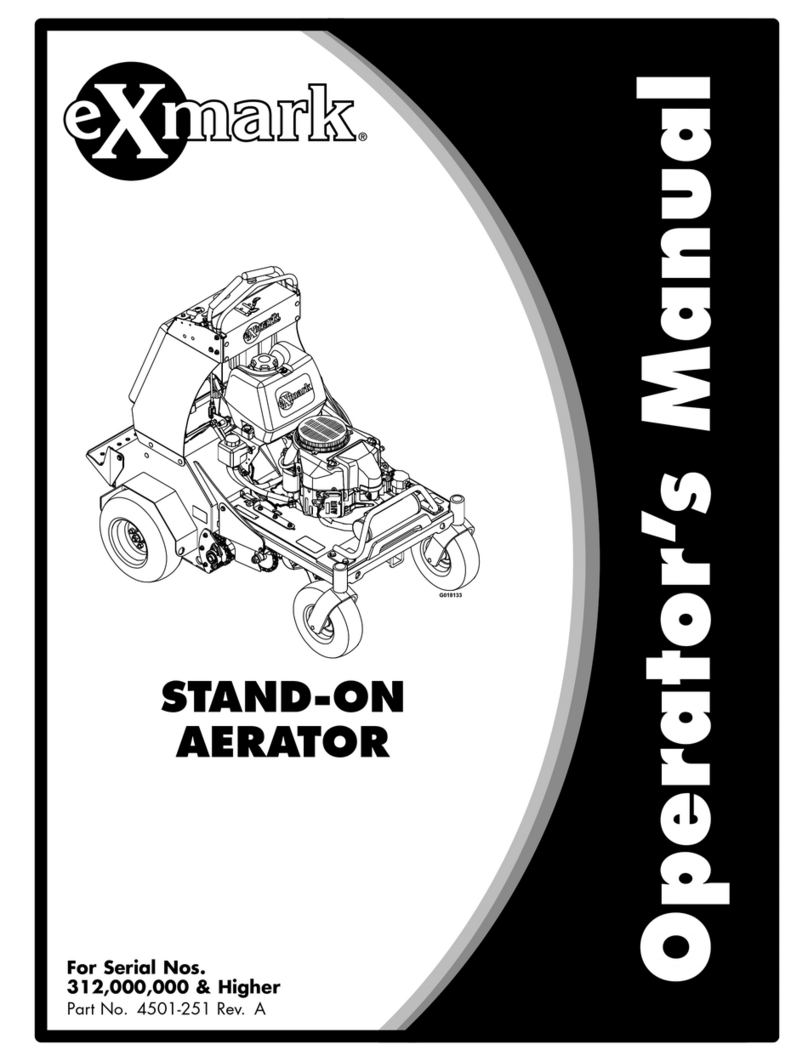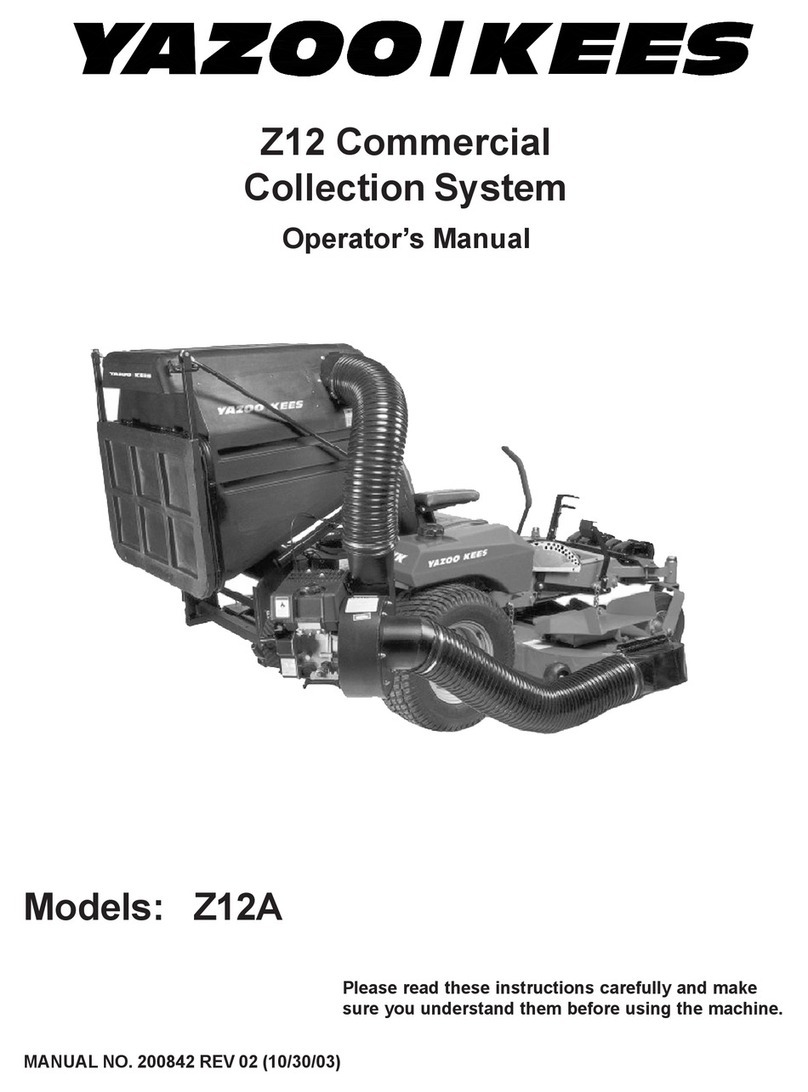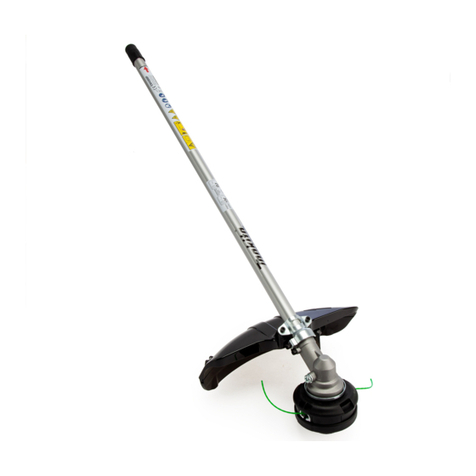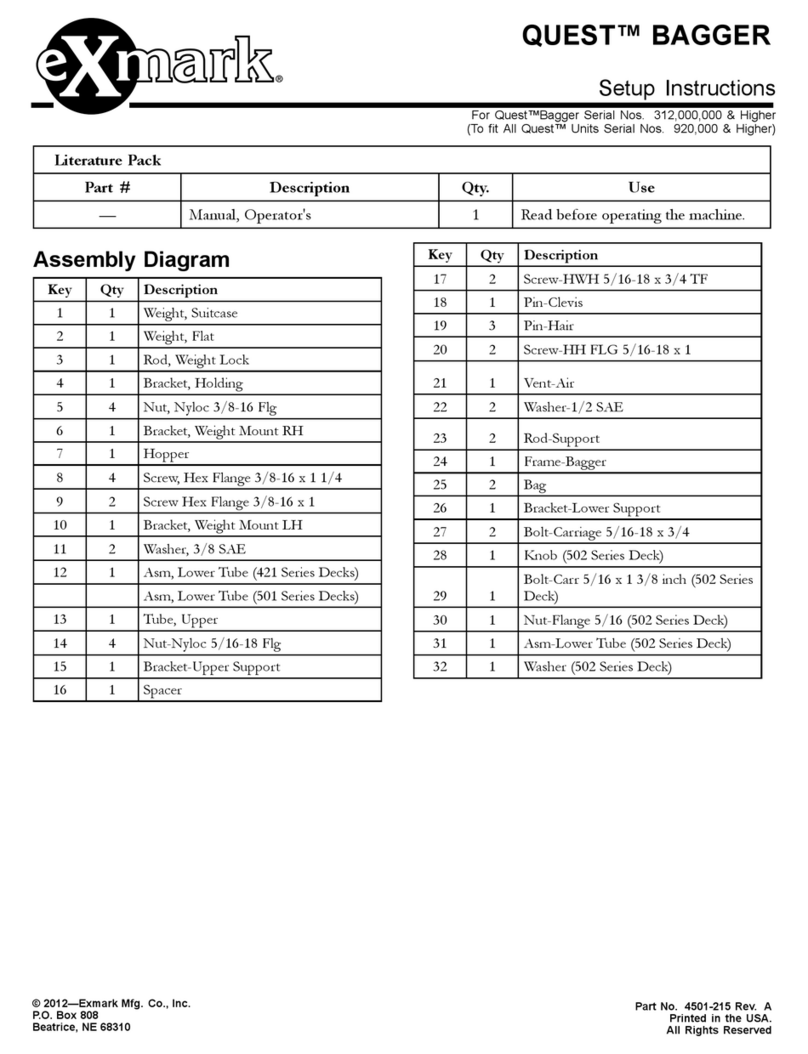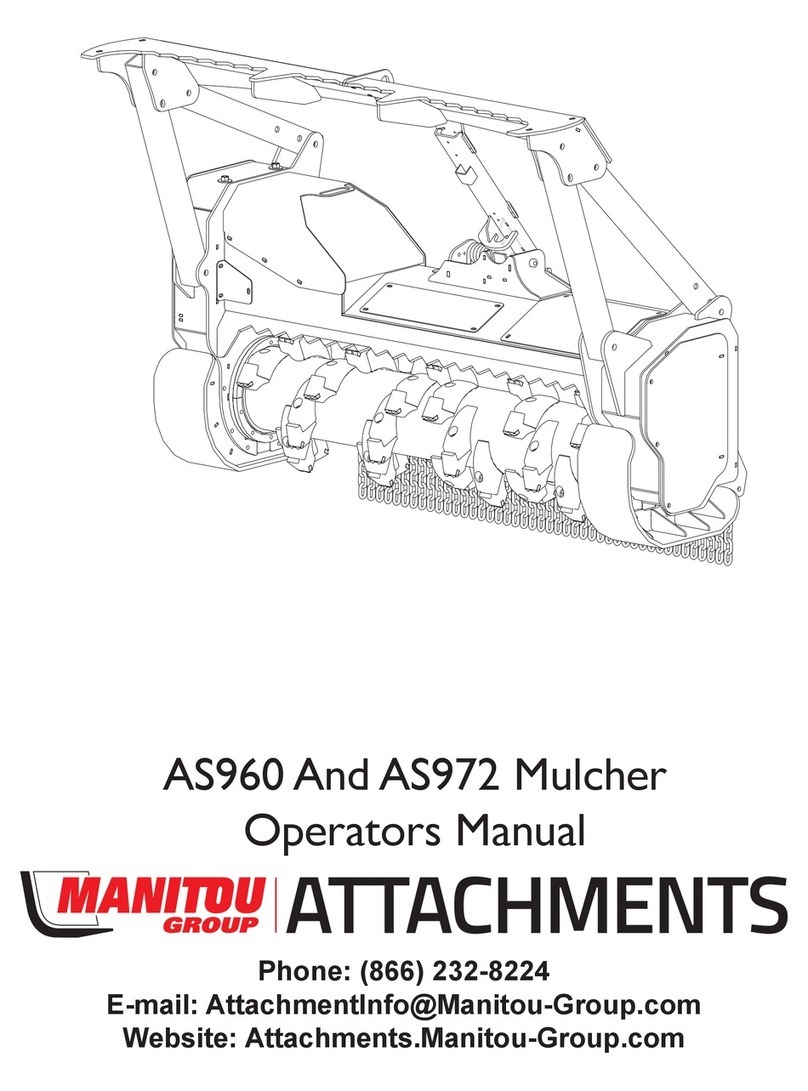kincrome K16000 User manual

M783010D
Owner’s Manual
Instructions for Assembly, Testing, Operation, Servicing, and Storage
Kincrome Sprayers: For outdoor use with agricultural pesticides and other liquids**
** This sprayer is recommended for use in spraying non-flammable liquids such as pesticides,
water for plants/trees or dust control, ice control chemicals, or water-based non-flammable sealants
or stains for outdoor wood surfaces. However, WE RECOMMEND THAT THE SPRAYER NOT
BE USED FOR OTHER PURPOSES ONCE IT HAS BEEN USED FOR SPRAYING
PESTICIDES. Any chemical will leave some residual in the tank liner or sprayer components,
even after the sprayer has been properly cleaned. These residual chemicals can have unexpected
effects on future uses. For example, spraying water or other liquids that are contaminated with
residual pesticide may result in unforeseen hazards to plant or animal life.
Any Questions, Comments or Parts Orders
Call Kincrome Tools + Equipment 1300 657 528
WARNING
READ and UNDERSTAND the Owner’s Manual completely before using this sprayer.
Assemble, test, and use only in accordance with the Owner’s Manual instructions.
READ and FOLLOW chemical label instructions. Pesticides are hazardous chemicals.
KNOW emergency procedures BEFORE handling chemicals. Sprayer leaks, bodily
chemical contact, poisoning, and spills require immediate response.
AVOID inhaling, ingesting, or coming into contact with any chemicals.
WEAR personal protective gear when filling, using, cleaning, and servicing the
sprayer.
KEEP sprayer and spray materials away from children and pets. Pesticides are
especially toxic to them.
EXERCISE CAUTION in vehicle handling when towing/hauling a filled sprayer to avoid
loss of control or sprayer overturning.
DO NOT TURN ON POWER to sprayer until ready to spray in order to avoid unintentional
spray release.
Improper use of the sprayer or handling of chemicals could result in serious injury or
illness to the operator or nearby persons/animals, or could cause damage to the
environment.
MODEL NUMBER:
K16000, K16001, K16002

Table of Contents
2

Table of Contents
3
Intended Use ........................................................................................................................... 4
Summary of Important Safety Information .......................................................................... 5
During Assembly
During Use
General Chemical Safety
Chemical Application Safety
ATV Vehicle Handling Safety
Chemical Accident Procedures
Warning Label Location ......................................................................................................... 8
Component Inventory
Unpacking........................................................................................................................... 9
Unpacking the Manual Bag............................................................................................... 10
Assembly
Step One: Attach lance clips to tank ................................................................................. 11
Step Two: Attach drain cap to tank................................................................................... 11
Step Three: Attach gun hose to pump ...............................................................................12
Step Four: Attach hose guide to tank ................................................................................ 12
Step Five: Attach gun hose to spray gun........................................................................... 13
Step Six: Unpack and inspect parts from K16001 and K16002 kit bag............................. 14
Step Seven: Attach broadcast bracket to tank.................................................................... 14
Step Eight: Finish broadcast kit assembly......................................................................... 15
Step Nine: Attach sprayer to vehicle................................................................................. 15
Step Ten: Connect remote switch to vehicle battery......................................................... 16
Step Eleven: Check and test completed assembly............................................................. 17
Machine Components............................................................................................................ 18
Operation
Important Safety Information - Operation................................................................... 20
General Chemical Safety
Chemical Application Safety
ATV Vehicle Handling Safety
Chemical Accident Procedures
Preparing the Sprayer for Each Use.............................................................................. 24
Using the Sprayer
Step One: Assess wind conditions and clear work area.............................................. 25
Step Two: Fill the sprayer.......................................................................................... 25
Step Three: Operate the sprayer
Step 3.1: Model K16000.................................................................................... 27
Step 3.2 Models K16001, K16002..................................................................... 28
Step Four: Clean sprayer and decontaminate after use............................................... 33
Storage.................................................................................................................................... 34
Preparing for storage
Removing from storage
Troubleshooting..................................................................................................................... 35
Specifications.......................................................................................................................... 36
Parts Breakdown – Exploded View...................................................................................... 37
Appendix A: Broadcast Spray Calibration Tables.............................................................. 38
Limited Warranty.................................................................................................................. 39

Intended Use
4
The sprayer is intended for use in spraying agricultural pesticides and other non-flammable liquids.
SPRAYING PESTICIDES:
Pesticides are hazardous chemicals that must be handled with caution as directed
throughout this manual and on the pesticide label.
The sprayer is intended for use in spraying pesticides in liquid form only. The sprayer is NOT
intended for use in spraying pesticides in dry or aerosolized form, or for use with fumigants..
Sprayers K16001 and K16002 come equipped with a spot spray gun and a tank-mounted broadcast
spraying system. Use the spot spray gun if you desire to apply pesticide only on selected plants.
Use the broadcast spraying system if you wish to spray large ground areas.
SPRAYING OTHER LIQUIDS:
In addition to spraying pesticides, this sprayer may be used to spray other non-flammable liquids.
Example uses include: watering plants/trees or spraying water for dust control, applying ice control
chemicals, or applying water-based, non-flammable sealant or stain to outdoor wood surfaces.
However, WE RECOMMEND THAT THE SPRAYER NOT BE USED FOR OTHER
PURPOSES ONCE IT HAS ALREADY BEEN USED FOR SPRAYING PESTICIDES. Any
chemical will leave some residual in the tank liner or sprayer components, even after the sprayer
has been properly cleaned. These residual chemicals can have unexpected effects on future uses.
For example, spraying water or other liquids that are contaminated with residual pesticide may
result in unforeseen hazards to plant or animal life.
Contact Kincrome Tools + Equipment 1300 657 528 for any questions about the appropriate
use of the sprayer and/or optional accessories.

Summary of Important Safety Information
5
WARNING
Read and understand this owner’s manual completely before using the sprayer.
Read each chemical label’s instructions before handling the chemical.
Improper use of the sprayer or handling of chemicals could result in serious injury
or illness for the operator or nearby persons/animals, or cause damage to the
environment.
LISTED BELOW is a summary of safety information of particular importance. See
individual sections of this owner’s manual for more details.
------------------------------------ DURING ASSEMBLY ------------------------------
EXERCISE CAUTION when attaching remote switch to battery terminals. Follow
the steps listed in the Assembly section of this manual in exact sequence when
connecting the sprayer’s remote switch battery clamps to the battery terminals. Caution
must be exercised to avoid contact with battery acid and to prevent sparking.
CHECK and TEST completed assembly as directed in this manual. Serious injury
could result from chemical leaks if sprayer is improperly assembled.
DO NOT MODIFY sprayer design.
------------------------------------DURING OPERATION------------------------------
General Chemical Safety
READ and FOLLOW each chemical label’s instructions and warnings.
AVOID inhaling, ingesting, or coming into contact with any chemicals.
KNOW applicable licensing and regulatory requirements for the chemical you plan to
use.
KNOW emergency procedures before handling chemicals. Carefully review “Chemical
Accident Procedures” listed below and later in this manual. Also see First Aid instructions on
the chemical label.
WEAR protective clothing, eye protection, and chemical resistant gloves when filling,
using and cleaning the sprayer. Wear additional protective gear, such as facemask or apron, as
recommended on the chemical label.
EXERCISE EXTRA CAUTION around children and pets. Pesticides are especially toxic
to them. Keep sprayer and spray materials away from them at all times.
DO NOT MIX OR POUR chemicals in an enclosed, unventilated area
DO NOT USE flammable or corrosive chemicals in the sprayer.
FLUSH the sprayer before switching chemicals in order to prevent dangerous chemical
interactions.
STORE pesticides in a correctly labeled container and in a secure location.
MONITOR the health of operators frequently exposed to pesticides, as recommended by
the chemical label or local/federal regulations.
Chemical Application Safety
Before Spraying
INSPECT and PREPARE sprayer before each use as directed in this manual.
DO NOT TURN ON POWER to sprayer until ready to spray in order to avoid
unintentional spray release.
MAKE SURE BROADCAST NOZZLE IS ORIENTED to spray straight down before
starting the sprayer. An incorrectly positioned broadcast nozzle may spray chemicals on you
or others.

Summary of Important Safety Information
6
DO NOT SPRAY when wind speed exceeds 6.5 kmh in order to minimize spray drift.
CLEAR work area of people/ pets and POST warning notices to restrict access for the
period recommended on chemical label.
KEEP sprayer and spray materials away from children/pets. Pesticides can be especially
toxic to children and animals.
DO NOT ALLOW anyone younger than 16 to operate sprayer since pesticides are
especially toxic to children.
During Spraying
DO NOT OVERAPPLY pesticide. Apply at rate recommended by chemical manufacturer.
Excess pesticide can be dangerous to humans/animals, damage desirable plants, and
contaminate soil and water sources.
DO NOT EAT, DRINK, SMOKE, RUB YOUR EYES, or TOUCH YOUR BARE SKIN
while handling chemicals and spraying.
NEVER POINT THE SPRAY GUN at people or animals.
EXERCISE EXTRA CAUTION when spraying near areas accessible to children and
pets.
CLEAN up spills immediately per instructions on the chemical label.
TURN OFF vehicle and set brake or block wheels, TURN OFF power to sprayer, and
RELIEVE system pressure before leaving sprayer unattended.
SEE Troubleshooting section of this manual before attempting any repairs. Wear
personal protective equipment and follow safety instructions.
After Spraying
CLEAN sprayer immediately after use according to the directions provided in this manual.
DECONTAMINATE yourself after you are done spraying and have cleaned the sprayer.
Wash all exposed areas of the body with soap and water, and remove and launder clothing.
DISPOSE OF or STORE remaining chemicals in secure storage with correctly marked
container.
ATV Vehicle Handling Safety
DO NOT ALLOW drivers younger than 16 to operate ATV with sprayer attached.
EXERCISE SPECIAL CAUTION in ATV vehicle handling and DO NOT exceed 8 kmh.
ATV will be less stable and perform very differently with filled sprayer attached. Exercise
particular caution on sloped or rough surfaces to avoid rollover. Use a vehicle equipped with
rollover protection for use on non-level terrain.
DO NOT RIDE or TRANSPORT cargo on the sprayer.
Chemical accident procedures
Immediate response is necessary in the event of sprayer leaks, bodily chemical contact, poisoning,
or spills. See instructions below:
Sprayer leak
If the sprayer develops a leak,
immediately stop spraying. Turn off
power to the sprayer and follow directions below, as applicable.
Bodily chemical
contact Personal contamination can occur when chemicals splash, spill, or
spray directly onto a person.
1. Immediately follow First Aid instructions on chemical label.
General procedures can include:
a) Eyes – immediately flush with water.
b) Skin – wash all contaminated skin surfaces with soap and
water.
c) Clothing – remove contaminated clothing. Dispose of heavily

Summary of Important Safety Information
7
contaminated clothing per chemical label instructions.
2. Seek medical advice if instructed on the label or the victim
experiences symptoms of harmful effects. Bring the chemical label for
reference.
Poisoning by
ingestion or
inhalation
In case of poisoning from ingestion or inhalation
:
If the victim has collapsed or is not breathing, call 000. Otherwise:
1. If you are the victim, immediately seek assistance from nearby
personnel because you may become incapacitated.
2. Immediately follow first aid instructions on chemical label.
3. Call a poison control center for further advice.
Chemical spills Chemical spills must be quickly contained and properly cleaned up.
Refer to the chemical label for any specific clean-up instructions.
General procedures include:
1. Controlling the spill by stopping the source of the spill.
2. Containing the spill so that it does not spread and get into water
sources.
3. Cleaning up the spill immediately.
4. Seeking additional advice from:
-Chemical manufacturer. See chemical label for contact
information.

Warning Label Location
8
WARNING
READ and UNDERSTAND the Owner’s Manual completely before using this sprayer. Assemble, test, and
use only in accordance with the Owner’s Manual instructions.
READ and FOLLOW chemical label instructions. Pesticides are hazardous chemicals, which must be
handled carefully.
KNOW emergency procedures BEFORE handling chemicals. Sprayer leaks, bodily chemical contact,
poisoning, and spills require immediate response.
AVOID inhaling, ingesting, or coming into contact with any chemicals.
EXERCISE CAUTION in vehicle handling. Vehicle will be less stable and handle very differently with filled
sprayer attached.
DO NOT TURN ON POWER to sprayer until ready to spray in order to avoid unintentional spray release.
Improper use of the sprayer or handling of chemicals could result in serious injury or illness to the operator or
nearby persons/animals, or could cause damage to the environment.

Unpacking
9
Closely inspect all contents in the shipping carton.
Note that some parts are shipped inside the tank.
If you have damaged components: Contact the freight company that delivered the unit and file a
claim.
If you have missing components: Contact Kincrome Tools + Equipment 1300 657 528.

Unpacking the Manual Bag
10
The following items are found in the K16000 manual bag.
The following items are found in K16001 and K16002 manual bags.
Drain Cap Rubber Washer
Lance Clip (2) Screw (3)
Hose Clamp (2)
Hose Guide Remote Switch
Drain Cap Rubber Washer
Screw (2)
Flange Bolt (1)
Hose Clamp (2)
Hose Guide Lance Clip (2)
Remote Switch
Tie Down Straps (2)

Assembly
11
Step One: Attach lance clips to tank
Fasten the two lance clips to the sprayer tank with screws.
Step Two: Attach drain cap to tank
1. Press the rubber washer into the drain cap with your finger.
2. Thread the drain cap onto the tank.

Assembly (continued)
12
Step Three: Attach gun hose to pump
1. Install hose clamp on hose.
i) Slide hose clamp over the end of the hose.
ii) Push the hose onto the hose barb.
iii) Slide the hose clamp over the hose barb.
iv) Tighten the hose clamp.
2. Attach one end of the gun hose to the pump hose barb.
Step Four: Attach hose guide to tank
1. Route gun hose through hose guide.
2. Attach hose guide to tank with bolt.
Gun hose
Hose clamp
Model # K16000
Model # K16001, K16002
Gun hose
Flange bolt
Hose guide
Hose guide
Screw
Gun hose
Model # K16001, K16002 Model # K16000

Assembly (continued)
13
Step Five: Attach gun hose to spray gun
1. Install hose clamp on hose.
i) Slide hose clamp over the end of the hose.
ii) Push the hose onto the hose barb.
iii) Slide the hose clamp over the hose barb.
iv) Tighten the hose clamp.
2. Attach the end of the gun hose to the gun hose barb.
**ATTENTION**
Model K16000 continue with Step 9.
Models K16001 and K16002 continue with Step 6.
Spray gun Hose clamp
Gun hose
Hose barb

Assembly (continued)
14
Step Six: Unpack and inspect parts from K16001 and K16002 kit bag
Step Seven: Attach broadcast bracket to tank
Attach broadcast bracket to tank using (2) screws.

Assembly (continued)
15
Step Eight: Finish broadcast kit assembly
1. Push broadcast lance into broadcast bracket. Note orientation.
2. Install hose barb into open port on pump. Hand tighten, then one turn with a wrench.
3. Connect 24” hose from pump to broadcast lance using two hose clamps. Follow hose clamp
instructions below.
4. Thread broadcast nozzle hand tight onto the end of the lance. Note orientation.
Step Nine: Attach sprayer to vehicle
NOTE: If your vehicle battery will be inaccessible after the sprayer is attached, proceed to
“Step Ten: Connect remote switch to vehicle battery” prior to performing this step
Secure the sprayer tank to your ATV rack with two tank straps. Note: K16000 sprayer does not
include tank straps.
Hose clamp installation instructions:
1. Slide hose clamp over the end of the hose
2. Push the hose onto the hose barb
3. Slide the hose clamp over the hose barb
4. Tighten the hose clamp

Assembly (continued)
16
Step Ten: Connect remote switch to vehicle battery
1. Preparatory safety Preparatory safety steps:
ALWAYS use eye protection
NEVER smoke or work near sparks or other sources of ignition.
NEVER touch both battery terminals at the same time or with any
non-insulated tools.
If battery acid contacts skin or clothing, flush immediately with
water and neutralize with baking soda.
2. Connect remote
switch to battery Connect the sprayer’s remote switch to the vehicle battery using the
following procedure:
a) Disconnect the vehicle battery ground wire.
b) Connect the remote switch’s red battery clamp to the positive (+)
terminal of the battery.
c) Connect the remote switch’s black battery clamp to the negative
(-) terminal of the battery.
d) Reconnect the vehicle battery ground wire.
WARNING: Always connect in this sequence to avoid possible shock.
3. Connect remote
switch to pump
power cord
Connect the remote switch to the pump power cord:
Note: Make sure the power switch is in the OFF position on the remote
switch.
4. Verify connection
Verify a complete connection has been made
by checking with a DC
voltmeter, or by briefly turning the remote switch to the ON position and
listening for pump activation.
5. Attach sprayer to
vehicle if haven’t
yet
If you have not yet mounted the sprayer to your vehicle, do so at this
time following the instructions in “Step Nine: Attach Sprayer to
Vehicle”.
WARNING
Batteries are hazardous because they contain caustic acid, can emit explosive gases, and
can cause electric shock.
Caution must be exercised when making connections to a battery to avoid shock and
contact with the acid, and to prevent any sparking that could lead to an explosion.
ALWAYS follow the safety instructions and steps listed below in exact sequence when
connecting the sprayer’s remote switch to the battery terminals.
Pump Power

Assembly (continued)
17
6. Disconnect after use
AFTER
EACH
USE,
disconnect power to the sprayer
by disconnecting
the sprayer’s pump cord from the remote switch – the remote switch may
remain connected to the battery.
NOTE: It is important to disconnect power to the sprayer when not in
use for safety reasons. ALWAYS verify that the power has been
disconnected or the remote switch is in the OFF position before adding
chemicals or servicing.
7. To disconnect
permanently When it is necessary to disconnect the sprayer’s remote switch from the
battery, use the following procedure:
1. Disconnect sprayer’s pump cord from the remote switch.
2. Disconnect the remote switch from the vehicle battery as
follows:
a) Disconnect vehicle battery ground wire.
b) Disconnect the remote switch’s black battery clamp from
the negative(-) terminal of the vehicle battery.
c) Disconnect the remote switch’s red battery clamp from the
positive(+) terminal of the vehicle battery.
d) Reconnect the vehicle battery ground wire.
WARNING: Always disconnect in this sequence to avoid possible shock.
(Remember that on some vehicle models, you may need to remove the
sprayer to access the battery)
Step Eleven: Check and test completed assembly.
WARNING
Check and test completed assembly
Serious injury could result from chemical leaks if sprayer is improperly
assembled or the design of the sprayer is modified.
Follow the steps below to ensure the sprayer is properly assembled. Never
modify the sprayer design.
1. Check assembly Check assembly to assure the sprayer is properly assembled and in
safe working condition:
a) Check that the gun clip screws are tight, hose clamps are secure,
and tank straps are properly fastened.
b) While it is unlikely that factory-assembled components become
loose, they should also be checked to make sure they are tight.
2. Test with water Test the system for leaks with water:
a) Fill the tank with water.
b) Connect the remote switch to the pump power cord and turn the
remote switch ON. The pump is an “on demand” pump. When
turned on, the pump will prime itself, then turn off. When the
gun trigger is squeezed, the pump will automatically start.
c) Operate the spray gun by squeezing the gun trigger.
d) Check for leaks throughout the system. If a leak is detected, fix the
leak and re-test the system with water until no leaks are detected.

Machine Components (Model # K16000)
18
1. Hose Wrap. The hose wrap is built into the tank and provides a storage location for the
gun hose
2. Gun Hose. The 4.5m gun hose transfers chemical from the pump to the spray gun.
3. Fill Cap. The fill cap has a vent to allow air to enter the tank as the chemical is
dispensed.
4. Sprayer Pump. The sprayer pump makes the chemical flow to the spray gun and the
nozzle.
5. Suction Tube. The suction tube is the inlet line for the pump. The suction tube has a
suction strainer to prevent debris from entering the pump.
6. Spray Gun. Use the spot spray gun to apply chemical to specific areas. The spray
pattern is adjustable from stream to cone by twisting the spray nozzle (see Operation
Instructions). When the remote switch is in the ON position, the spray gun trigger is the
pump ON/OFF control. Squeeze the trigger and the pump turns on, let go and the pump
turns off.
7. Lance Clips. Use the gun clips to store the spray gun.
8. Sprayer Tank. The sprayer tank holds the chemical.
9. Pump Power Cord. The pump power cord connects the sprayer pump to the remote
switch. It should be disconnected when the sprayer is not in use.
10. Remote Switch. The remote switch connects the battery to the pump power cord and
allows the operator to turn the sprayer pump on and off. The remote switch may be left
connected to the battery when the sprayer is not in use.

Machine Components (Model # K16001, K16002)
19
1. Hose Wrap. The built-in hose wrap provides a storage location for the gun hose on the
tank.
2. Gun Hose. The 4.5m gun hose transfers chemical from the pump to the spray gun.
3. Fill Cap. The fill cap has a vent to allow air to enter the tank as the chemical is
dispensed.
4. Sprayer Pump. The sprayer pump makes the chemical flow to the spray gun and the
nozzle.
5. Suction Tube. The suction tube is the inlet line for the pump. The suction tube has a
suction strainer to prevent debris from entering the pump.
6. Spray Gun. Use the spot spray gun to apply chemical to specific areas. The spray
pattern is adjustable from stream to cone by twisting the spray nozzle (see Operation
Instructions). When the remote switch is in the ON position, the spray gun trigger is the
pump ON/OFF control. Squeeze the trigger and the pump turns on, let go and the pump
turns off.
7. Lance Clips. Use the gun clips to store the spray gun.
8. Broadcast Bracket. The broadcast bracket holds the broadcast lance for broadcast
spraying. The bracket has a storage location for the lance when it is not in use.
9. Sprayer Tank. The sprayer tank holds the chemical.
10. Broadcast Lance. The broadcast lance sprays a wide pattern to broadcast spray
chemical.
11. Pump Power Cord. The pump power cord connects the sprayer pump to the remote
switch. It should be disconnected when the sprayer is not in use.
12. Remote Switch. The remote switch connects the battery to the pump power cord and
allows the operator to turn the sprayer pump on and off. The remote switch may be left
connected to the battery when the sprayer is not in use.

Operation – Important Safety Information
20
Now that you have completed and tested your assembly, there is some important safety and health
information you need to know with regard to handling and spraying chemicals, as well as vehicle
handling with the sprayer attached.
WARNING
Carefully read and make sure you understand the following safety information before using the sprayer.
General Chemical Safety:
WARNING
Pesticides are hazardous chemicals.
Heed the warnings below and follow all instructions carefully.
Improper handling of chemicals can result in serious injury or illness, or cause
damage to the environment.
Chemical label. ALWAYS READ and FOLLOW all chemical label instructions.
Licensing/regulation. Refer to any applicable licensing restrictions or state/federal
regulations with regard to the application of the particular chemical you plan to use.
Emergency procedures. Before handling chemicals, carefully review the “Chemical
Accident Procedures” listed later in this section, as well as the “Statement of Practical
Treatment” on the chemical label.
Inhalation/contact. ALWAYS take precautions to avoid inhaling or coming into contact
with the chemical.
Personal protective equipment. ALWAYS wear protective clothing, eye protection, and
chemical-resistant gloves when filling, using and cleaning the sprayer. Wear additional
protective gear (such as facemask or apron) as recommended on the chemical label.
Children/pets. Pesticides can be especially toxic to children and animals. ALWAYS
exercise extra caution around children. Keep sprayer and all spray materials away from
children and animals.
Ventilation. ALWAYS ensure there is adequate ventilation when mixing, pouring, or
spraying.
Flammables. NEVER use any flammable chemicals in the sprayer.
Corrosives. DO NOT use corrosive chemicals in the sprayer. They can weaken the
sprayer and its parts, resulting in leaks. Check with the chemical manufacturer to ensure
chemical is compatible with all components of the sprayer.
Chemical interaction. ALWAYS flush the sprayer before switching chemicals. Different
chemicals may interact dangerously with each other.
Chemical storage. ALWAYS store pesticides in a properly labeled container and in a
secure location per the manufacturer’s recommendations.
Health monitoring. Monitor the health of operators who are frequently exposed to
pesticides, as recommended by the chemical label or local/federal regulations.
This manual suits for next models
2
Table of contents
Popular Lawn And Garden Equipment manuals by other brands
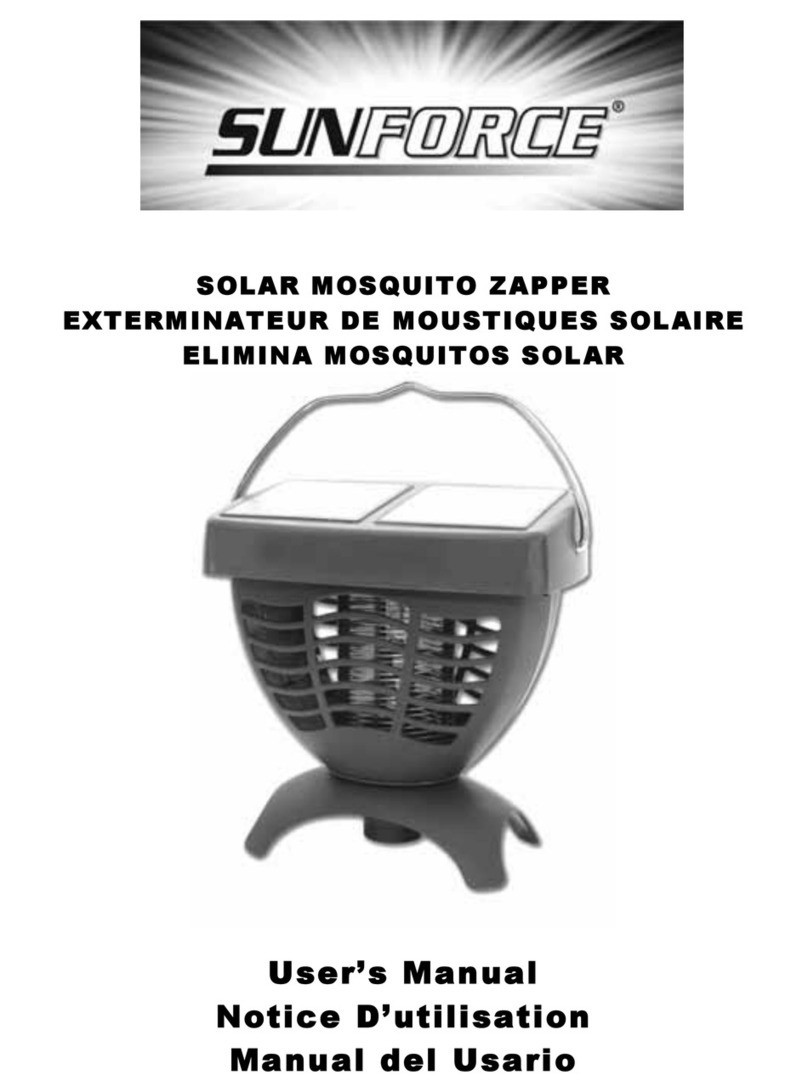
Sunforce
Sunforce SOLAR user manual
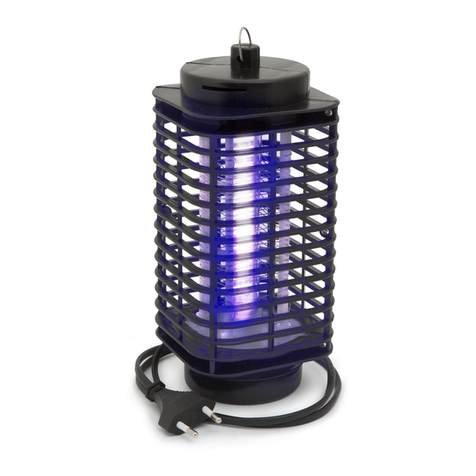
GARDEN OF EDEN
GARDEN OF EDEN 55627 user manual
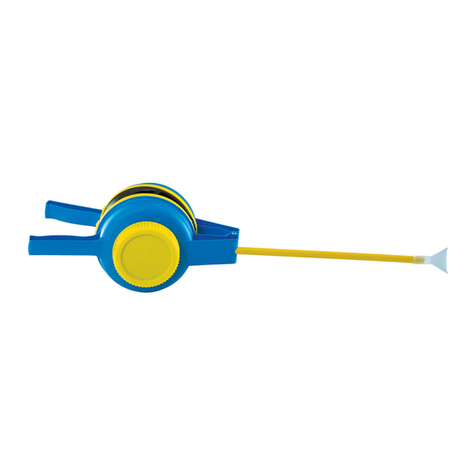
Goizper Group
Goizper Group MATABI POLMINOR instruction manual
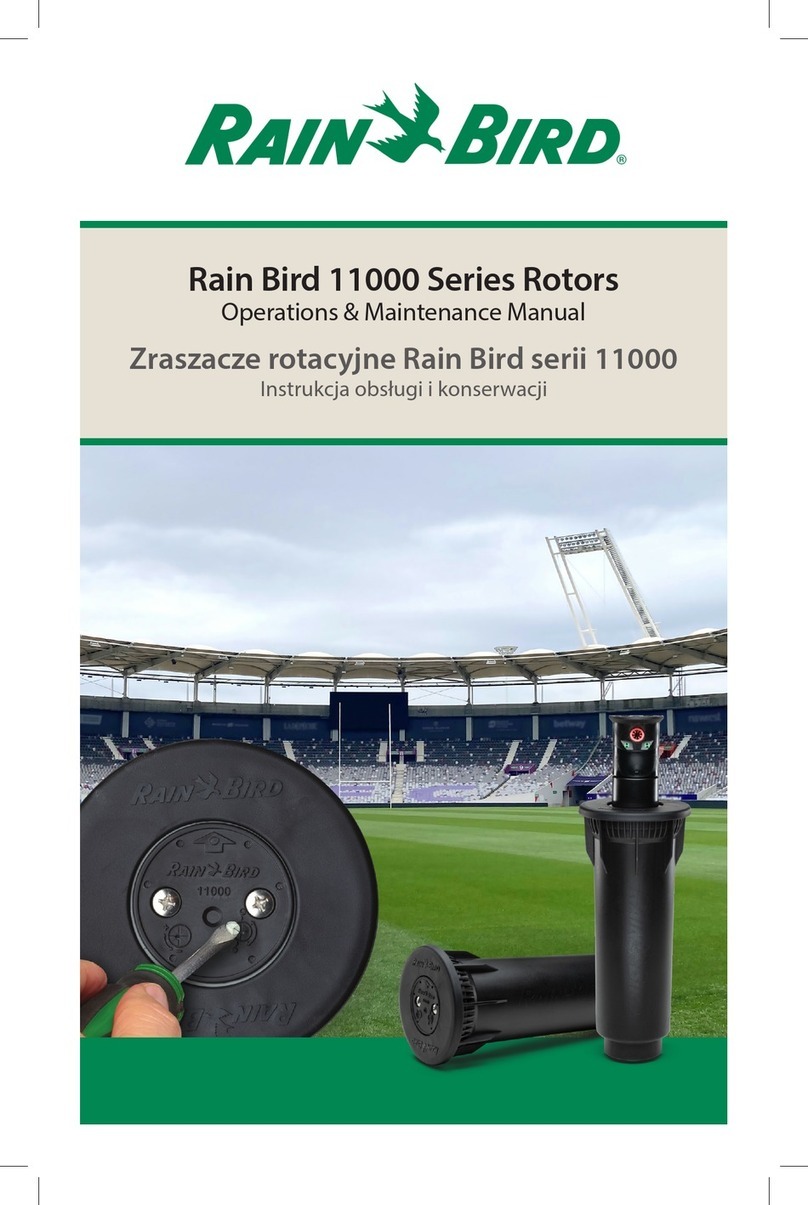
Rain Bird
Rain Bird 11000 Series Operation & maintenance manual
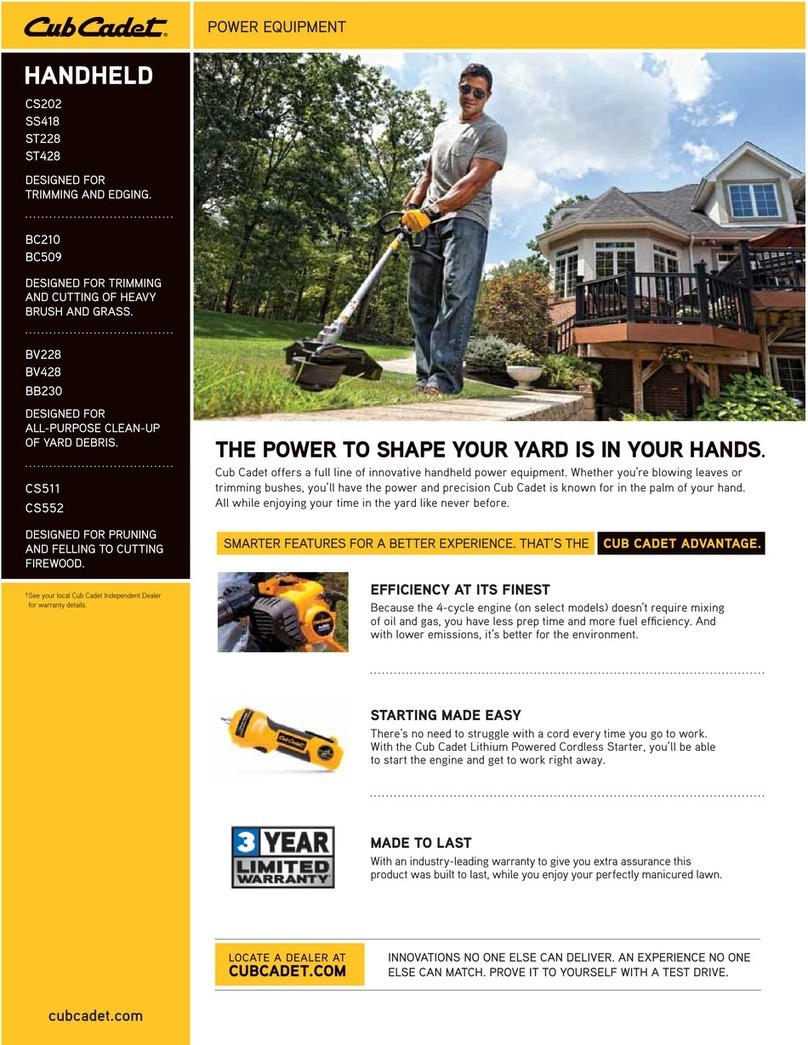
Cub Cadet
Cub Cadet BB 230 brochure
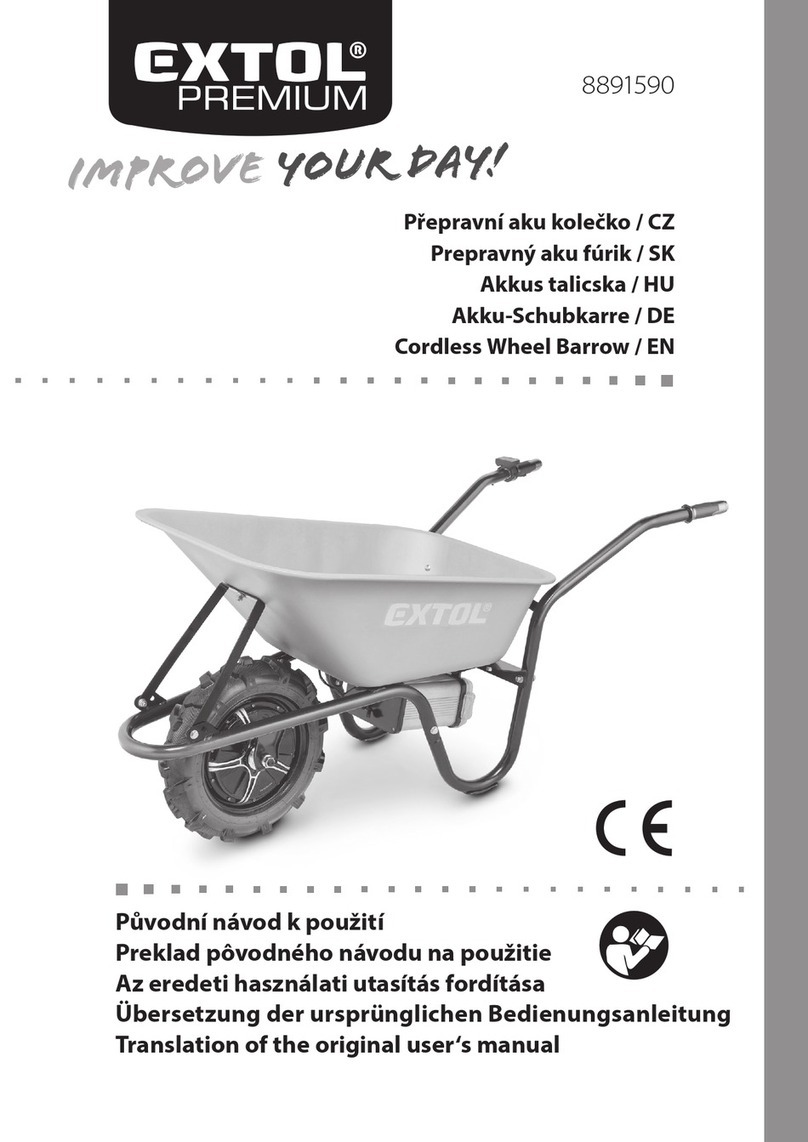
EXTOL PREMIUM
EXTOL PREMIUM 8891590 Translation of the original user manual
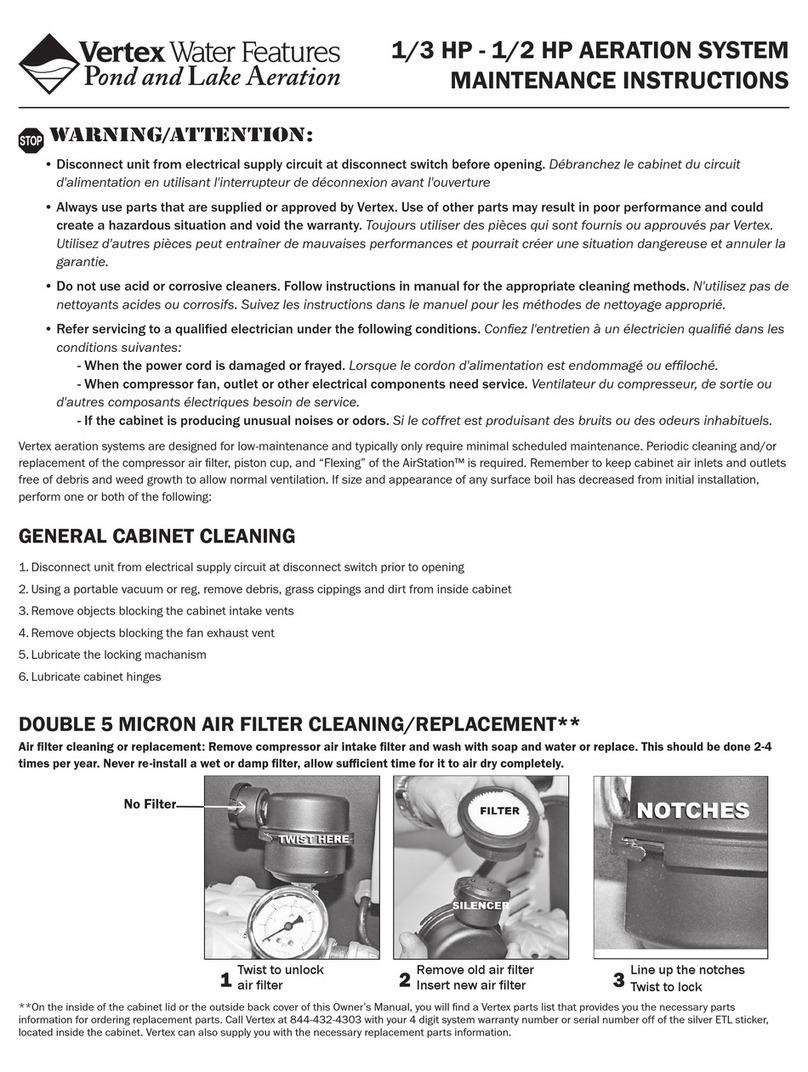
Vertex
Vertex 1/3 HP Maintenance instructions
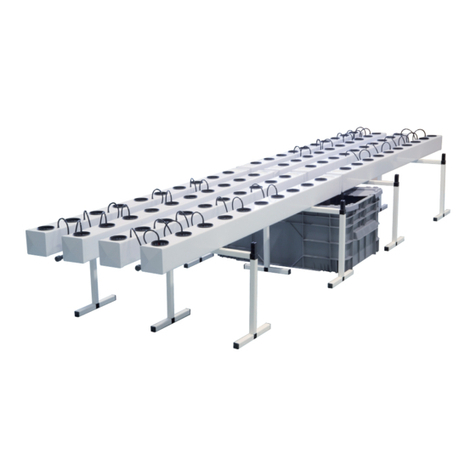
GHE
GHE AeroFlo 80 manual
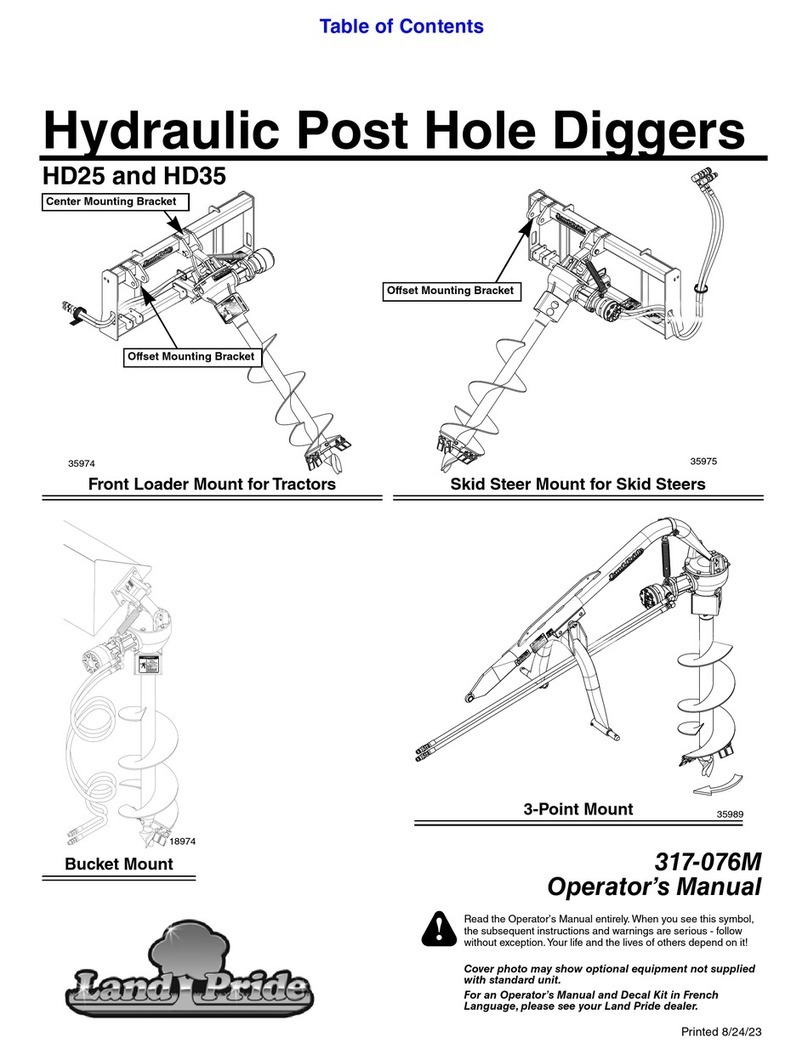
Land Pride
Land Pride Post Hole Diggers HD25 Operator's manual
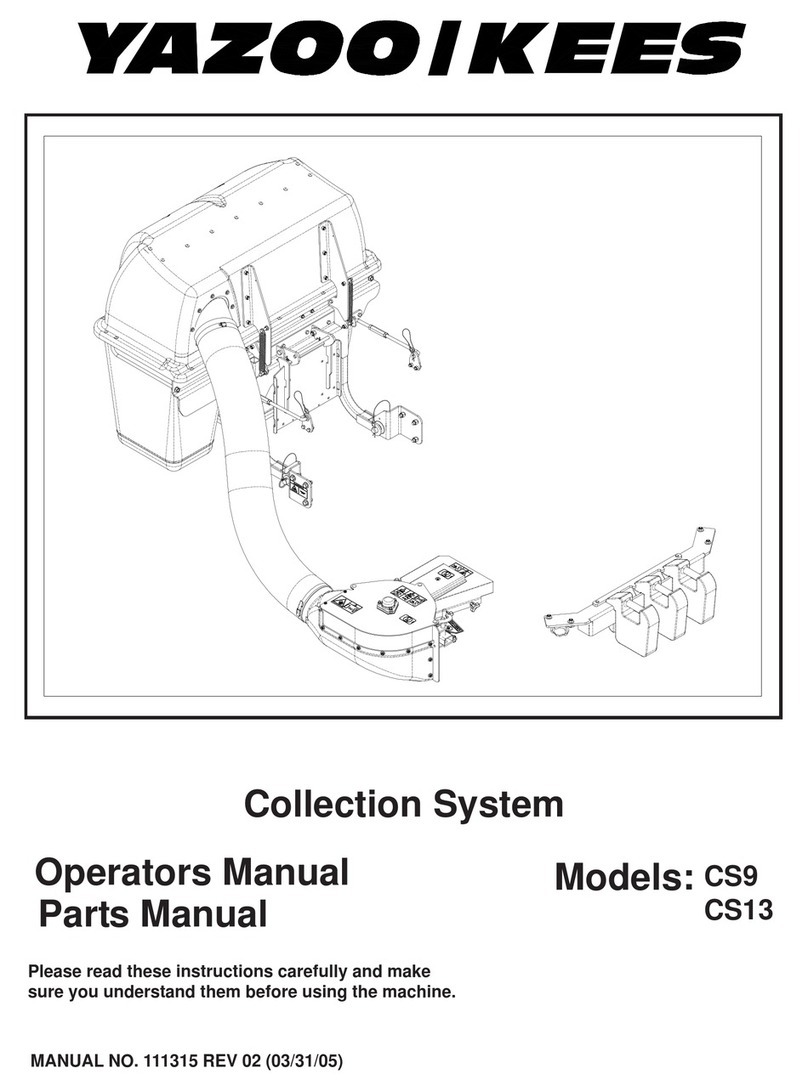
Yazoo/Kees
Yazoo/Kees Z9 Commercial Collection System Z9A Operator's & parts manual

Premier designs
Premier designs WindGarden 26829 Assembly instructions
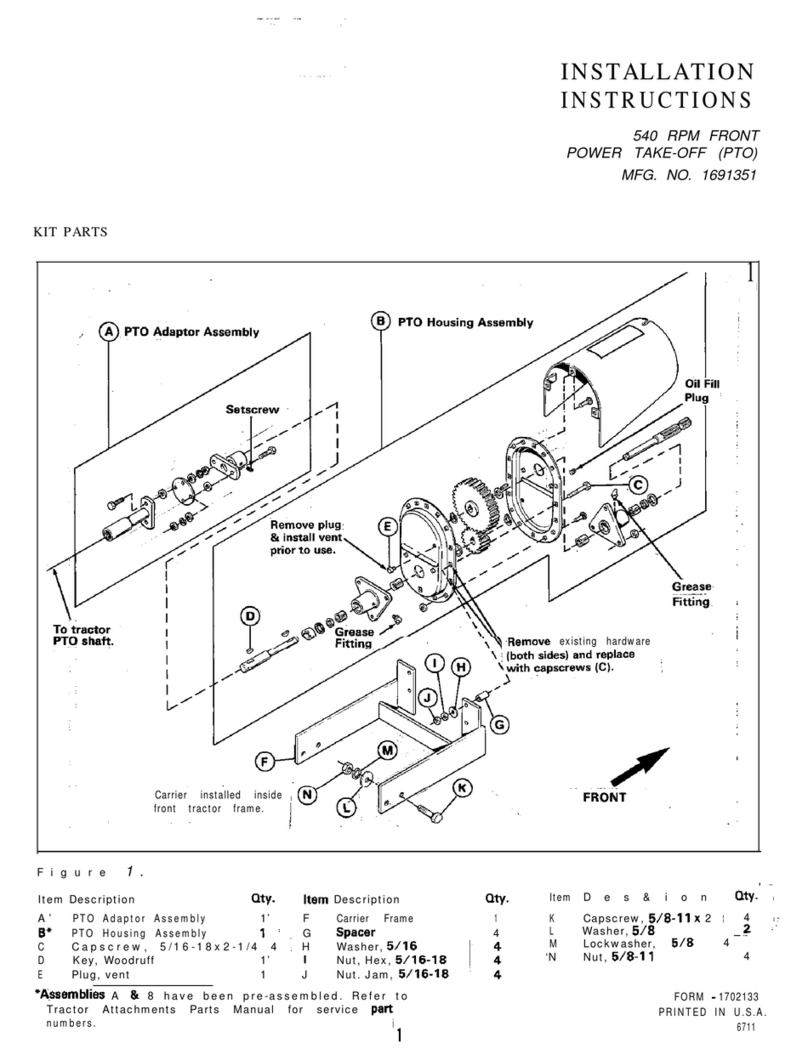
Snapper
Snapper 1691351 installation instructions
